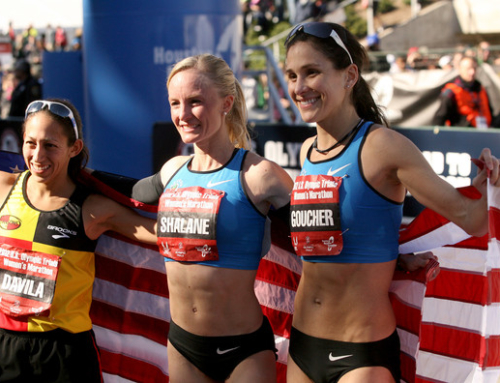July 21, 2014
By Phil Maynard
Thomas G. Bandy is an internationally recognized church consultant and leadership coach. The author of many books over the years, this may be my favorite due to the very practical nature of this resource. Bandy has been a leader in the development of helpful resources for understanding demographic research and the implications of that research for ministry in the local church as well as for denominational leadership as clergy are deployed for greater effectiveness.
Part 2 (click here for part 1)
In the second half of See, Know, & Serve The People Within Your Reach, Thomas Bandy makes a strong case for developing clearer ‘filters’ through which church planners can develop strategies for ministries appropriate to public expectations. He encourages us to move away from vague and less than helpful categorizations like:
- Basic or Radical Hospitality
- Traditional or Contemporary Worship
- Christian Education (traditionally Sunday School)
- Large Groups and Small Groups
- Missions as daily survival rather than other urgent priorities
- Legitimate church being represented as facilities, members, and oral/written communications
Using the tool and language of ‘lifestyle segments’, Bandy addresses a variety of what he terms Alternatives. Let’s explore just a few:
Leadership Alternatives
Moving from the era of professionalism and certification when clergy could be deployed to any context, Bandy notes that the missional attitude necessary for successful ministry includes a heart for the lifestyle segment to be blessed, the integrity of being able to immerse oneself in the segment’s culture, the skills to work effectively with a target culture, and the ability to collaborate with others. For example, a CEO leadership style matched with a lifestyle segment comprised of corporate executives, small business leaders, and nonprofit leaders or Care Giver leadership style matched with a lifestyle group needing a ministry of presence.
Hospitality Alternatives
The key to offering appropriate hospitality is intentionality but the form varies considerably depending on the lifestyle groups being served. For example, those expecting just the ‘basics’ (typically small towns and rural communities) are happy with two urns of coffee (regular and decaf) and perhaps some packaged cookies or pastries. The design of the hospitality space is of little consequence since most people do not linger and socialize. Contrast that with the ‘healthy choices’ lifestyle representing wealthier, more upscale, and younger families who expect that the hospitality team mirror the demographic community; that environmentally friendly dishes and utensils are used; and that a variety of healthy options are available (fresh fruits and vegetables) to nibble on while engaging in lingering conversations.
Worship Alternatives
Rather than the usual suspects (traditional and contemporary) Bandy suggests that worship style is of secondary concern and that congregations should begin viewing worship as a mission event. Good worship is no longer defined by internal priorities of liturgical or theological consistency but by the external priorities. He identifies seven options for consideration: inspirational, coaching, healing, caregiving, transformational, educational, and mission-connectional. Any style may be effective in meeting the needs but the form the elements of worship take will vary according to the needs of the lifestyle groups. It may be necessary to offer more than one style and form of worship.
Education Alternatives
The traditional distinctions regarding how people learn have become so complicated that the typical generational and cultural distinctions no longer apply. Bandy suggests that we must consider the form (curricular or experiential), the content (biblical or topical) and the relationship component (generational or peer group). Depending on lifestyle grouping the preferences might be focused on one option (e.g. Sunday School) or multiple options.
Small Group Alternatives
Bandy notes right off that the traditional Sunday School is no longer the cornerstone for Christian education due to a variety of factors including evolving learning methodologies, the desire for guided conversations, and even the use of long distance social media to maintain connections. People may become involved with one type of group (discovery, destiny, mission) and then travel to a different type. Strong leadership is a key to the development of small groups. Small groups include a common set of principles (prayer, actions, learning, sharing)
Outreach Alternatives
There is a flow (order) from least to most powerful related to the impact of outreach into the community (property loan to board leadership to charitable contributions to volunteer support and the growth of the church. Bandy identifies seven basic categories of outreach (survival, recovery, health, quality of life, human potential, interpersonal relationships, and human destiny). Different lifestyle groups will have varying interests.
Facility and Technology Alternatives
Normally, form follows function. In order to reach any given lifestyle segment, leaders design the appropriate programs and then design the facilities and upgrade the technologies to deliver the programs successfully. The form is just a container in which programs are delivered. The problem is, of course, that each lifestyle segment is naturally self-centered and wants facilities and technology that meets their needs. The more adaptable a church becomes to shape space and technique around lifestyle segments, the more its reputation for friendliness and relevance grows.
Stewardship and Financial Management Alternatives
Bandy describes two tensions that lifestyle segments balance in different ways: organizational stability and financial generosity. Leaders who are characteristically Cargivers and Enablers (see Leadership Alternatives) are more cautious about risk and more traditional in money management. Leaders who are characteristically CEO’s and Visionaries tend to be more selectively cautious in money management. Leaders who are characteristically Disciplers, Mentors, and Pilgrims tend to be risk-takers. From the lifestyle segment side, some segments prefer unified budgets while others prefer giving to designated, distinct capital pools.
Communication Alternatives
Methods of communication are important because of what they reveal or symbolize about the community and the congregation. The communication techniques have meaning that shape the identity of a local church and how well it is perceived to connect with the community. For example, some lifestyle segments prefer digital technology while others prefer printed materials. The most common form of communication in churches, even if it is no longer the most common method among many lifestyle segments, is printed materials. People communicate by a variety of ways (print, radio, television, internet, gatherings). Churches need to discern the way the lifestyle segment they are trying to connect with communicates.
We have just begun to scratch the surface of the insights Thomas Bandy brings to the use of lifestyle segments in strategic planning for churches. This book is a great resource for helping pastors, leadership teams, coaches, consultants, and developers delve into the nuances of each segment and plan for more effective ministry.







Leave A Comment